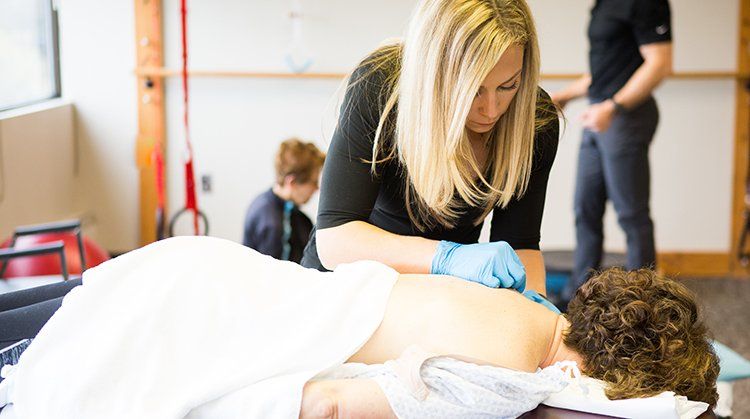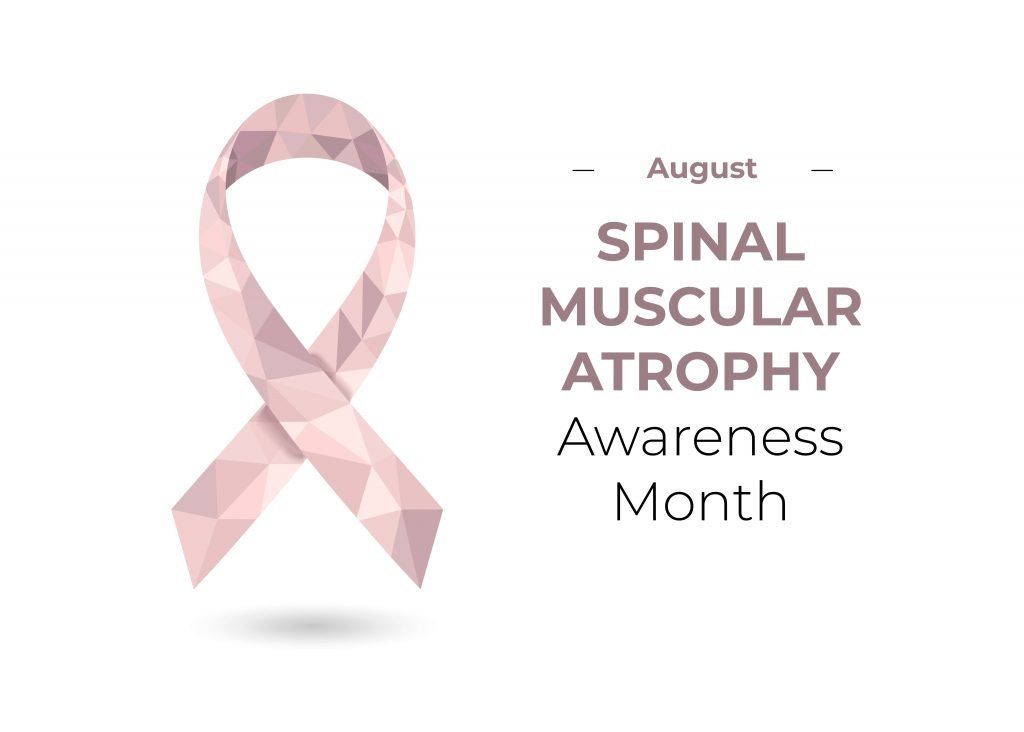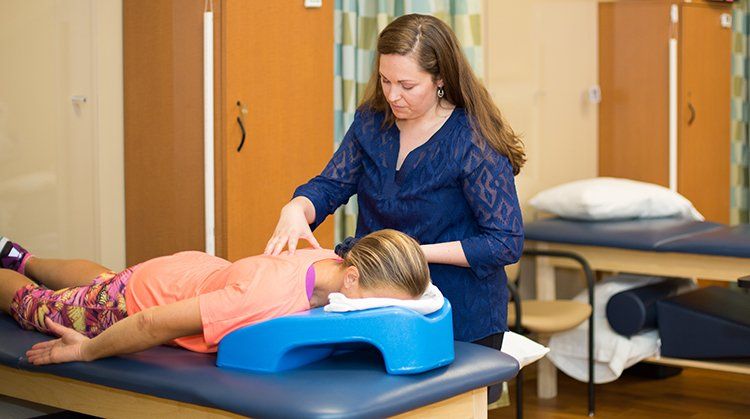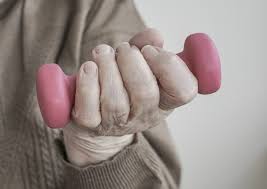








Balance problems make it difficult for people to maintain stable and upright positions when standing, walking, and even sitting. Older people are at a higher risk of having balance problems; 75% of Americans older than 70 years are diagnosed as having "abnormal" balance. Older women are more likely than older men to develop balance problems, although the difference between the genders is small. Balance problems increase by almost 30% in people aged 80 years or more. Mexican-Americans have the highest rate of balance problems among all Americans. Physical therapists develop individualized physical activity plans to help improve the strength, stability, and mobility of people with balance problems.
A balance problem exists when an individual has difficulty maintaining a stable and upright position. A range of factors can cause balance problems, including:
Balance problems can also be caused by medical conditions, such as:
Balance problems occur when 1 or more of 4 systems in the body are not working properly:
Poor vision can result from age, eye tracking problems, or eye diseases. Inner ear problems, also called vestibular problems, can develop from trauma, aging, poor nutrition, or disease. Body-position sense can become abnormal as a result of trauma or a disease, such as diabetes. Muscle strength and flexibility can decline due to lack of exercise, a sedentary lifestyle, or disease.
The brain coordinates impulses from the eye, inner ear, and body-position senses, and sends signals to the muscular system to move or make adjustments to maintain balance. If one or more of the senses is not sending correct signals to the brain, or if the muscular system cannot carry out the necessary movements, a person may not be able to maintain or correct their balance.
A person with balance problems may experience tripping, swaying, stumbling, dizziness, vertigo, and falling. Although a person’s "static" balance may be fine when standing still or only performing a single task at a time, “dynamic” balance problems may become apparent when the person is moving about or trying to do more than 1 thing at a time (ie, walking, while turning the head to talk to another person), or when there is not much light (at night, or in a darkened room). If someone’s dynamic balance is abnormal, it can cause a fall and possible injury.
Balance problems can make a person fearful of performing simple daily activities. As a result, they may lose muscle strength and become frail because they avoid strenuous or challenging movements. A person who has balance problems may start to feel frustration about the condition, and become depressed.
If you see your physical therapist first, the physical therapist will conduct a thorough evaluation that includes taking your health history. Your physical therapist will also ask you detailed questions about your condition, such as:
Your physical therapist will perform tests, such as motion, strength, coordination, visual tracking, and balance tests, to help assess your overall physical ability. Your physical therapist may collaborate with your physician or other health care providers, who may order further tests to rule out any underlying conditions that may exist.
Physical therapists offer numerous options for treating balance problems, based on each person’s needs. They are trained to evaluate multiple systems of the body, including the muscles, joints, inner ear, eye tracking ability, skin sensation, and position awareness in the joints (proprioception). Physical therapists are experts in prescribing active movement techniques and physical exercise to improve these systems, including strengthening, stretching, proprioception exercises, visual tracking, and inner ear retraining.
Your physical therapist can help treat your balance problems by identifying their causes, and designing an individual treatment program to address your specific needs, including exercises you can do at home. Your physical therapist can help you:
Reduce Fall Risk. Your physical therapist will assess problem footwear and hazards in your home that increase your risk of balance problems or falling. Household hazards include loose rugs, poor lighting, unrestrained pets, or other possible obstacles.
Reduce Fear of Falling. By addressing specific problems that are found during the examination, your physical therapist will help you regain confidence in your balance and your ability to move freely, and perform daily activities. As you build confidence in your balance and physical ability, you will be better able to enjoy your normal daily activities.
Improve Mobility. Your physical therapist will help you regain the ability to move around with more ease, coordination, and confidence. Your physical therapist will develop an individualized treatment and exercise program to gradually build your strength and movement skills.
Improve Balance. Your physical therapist will teach you exercises for both static balance (sitting or standing still) and dynamic balance (keeping your balance while moving). Your physical therapist will progressively increase these exercises as your skills improve.
Improve Strength. Your physical therapist will teach you exercises to address muscle weakness, or to improve your overall muscle strength. Strengthening muscles in the trunk, hip, and stomach (ie, “core”) can be especially helpful in improving balance. Various forms of weight training can be performed with exercise bands, which help avoid joint stress.
Improve Movement. Your physical therapist will choose specific activities and treatments to help restore normal movement in any of your joints that are stiff. These might begin with "passive" motions that the physical therapist performs for you, and progress to active exercises that you do yourself.
Improve Flexibility and Posture. Your physical therapist will determine if any of your major muscles are tight, and teach you how to gently stretch them. The physical therapist will also assess your posture, and teach you exercises to improve your ability to maintain proper posture. Good posture can improve your balance.
Increase Activity Levels. Your physical therapist will discuss activity goals with you, and design an exercise program to address your individual needs and goals. Your physical therapist will help you reach those goals in the safest, fastest, and most effective way possible.
Once your treatment course is completed, your physical therapist may recommend that you transition to a community group to continue your balance exercises, and maintain a fall-proof home environment. Many such community groups exist, hosted by hospitals, senior centers, or volunteer groups.
Your physical therapist may recommend that you consult with other medical providers, including:
To help prevent balance problems, your physical therapist will likely advise you to:
Your physical therapist will also prescribe a home exercise program specific to your needs to prevent future problems or injuries. This program can include strength and flexibility exercises, posture retraining, eye-tracking and vestibular exercises, and balance exercises.
Margaret is a 70-year-old retiree. She and her husband have lived in the same house for 30 years. Margaret is as active around the house as ever, taking care of all the household cleaning and maintenance, growing vegetables in her garden, cooking, and tackling light landscaping.
One night recently, Margaret tried to close the bathroom window when it turned chilly outside. She didn't bother to switch on the bathroom light. In order to reach the window, she had to step into the tub with her right foot. She found that she had to push harder on the stubborn window, and lifted her left leg to place it in the tub. The next thing she recalled was explosive pain in her ribs. She realized that she was on her side, sprawled half in and half out of the tub. She did not recall falling. Her husband got her to the doctor.
Margaret's doctor x-rayed her ribs, shoulder, and toe, and found no broken bones. He instructed Margaret on how to care for her many bruises. He bandaged a torn toenail on her right foot, and told Margaret that she would not be able to wear a closed-toe shoe for awhile.
When her doctor asked Margaret if she had fallen before, she admitted that she had lost her balance while going upstairs recently. She admitted that she felt more off-balance in the dark. Margaret also mentioned that she and her husband attended ballroom dancing sessions each week, and joked that she never could learn to “spot a turn.” The physician, knowing that the dancer technique of “spotting a turn” requires inner ear and vision function, recommended that Margaret consult with her eye doctor, and her physical therapist.
Margaret met with her eye doctor and got her vision prescription updated; she noted that she felt somewhat more balanced with proper eyeglasses. She then met with her physical therapist.
Margaret's physical therapist took her medical history and performed a full battery of tests, assessing Margaret's muscle strength, balance, body-position sense (proprioception), eye-tracking ability, and inner ear (vestibular) function.
She noted Margaret's bruises from her fall. In addition, she found that Margaret lacked the ability to keep her eyes focused on an object while turning her head, and that her balance was severely affected when her eyes were closed. She asked what Margaret's personal goals were for therapy; Margaret said she wanted to avoid falling, return to her normal vigorous household activities, and attend her ballroom dance sessions 3 times per week.
Margaret's treatment began with simple eye-tracking exercises, and moved on to standing and walking balance exercises. Her physical therapist then added specific strengthening exercises to the routine. She also performed hands-on therapy, somewhat like massage, to increase the healing speed of the shoulder and rib muscles that were bruised and strained. She also applied electrical stimulation and cold packs to those areas to reduce swelling and pain.
Margaret continued her physical therapy sessions for 4 weeks, increasing her exercises as her strength returned. She learned about fall-proofing her home, including installing night lights in the bathrooms, and about wearing proper footwear.
At the end of her treatment program, Margaret was able to return to all her household tasks, and maintain a home-based exercise program designed by her physical therapist. She reported that she felt much more confident about maintaining her balance, even at night. She and her husband returned to ballroom dancing—and she was able to gently “spot a turn” for the first time in her life!








